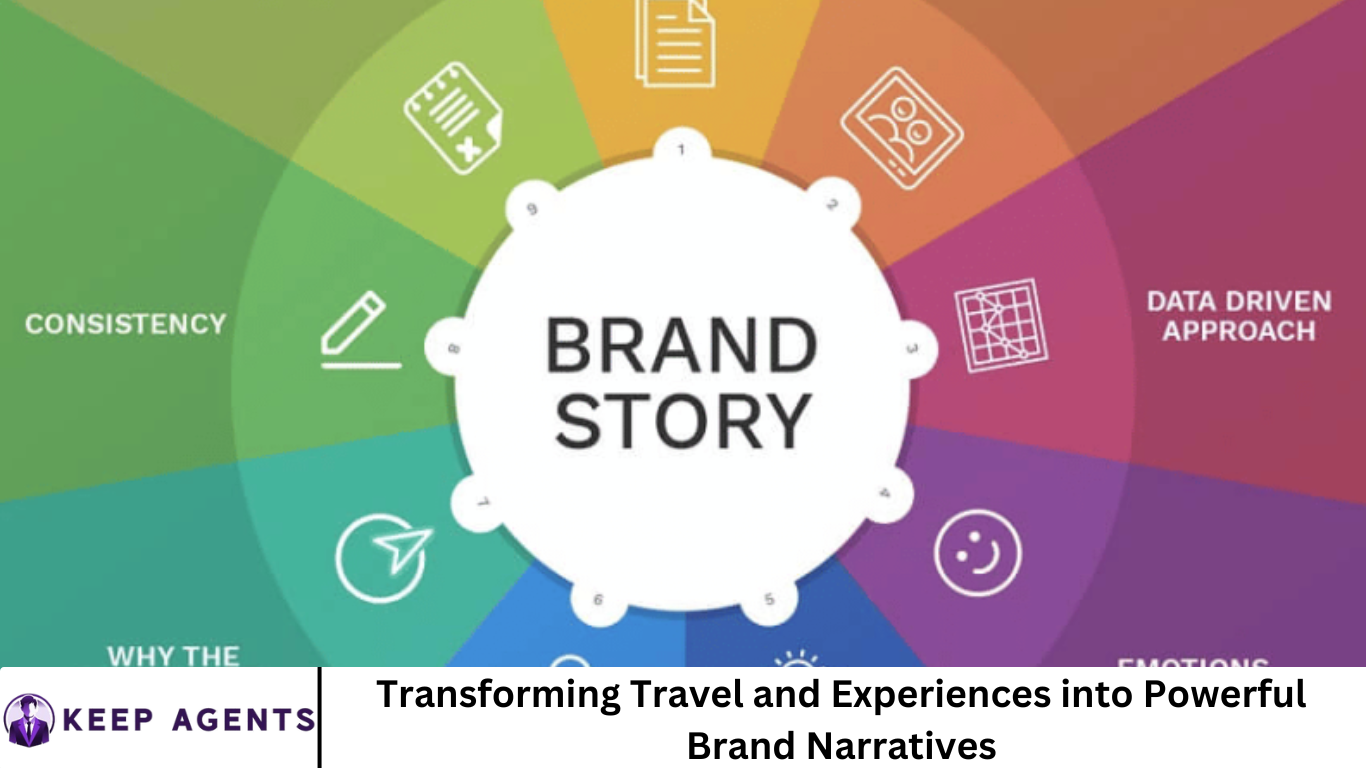Hyperconnected world, brands are constantly searching for innovative ways to engage audiences, cultivate loyalty, and stand out in an increasingly crowded marketplace. One of the most compelling strategies emerging in recent years is leveraging travel and real-life experiences to craft authentic, memorable brand narratives.
Storytelling is no longer confined to commercials or blog posts; it’s now about creating immersive, shareable moments that resonate deeply with consumers.
More Read: Capturing a Life: Interviewing Someone You Love
The Power of Experiential Storytelling
Travel offers a unique canvas for storytelling. It’s inherently emotional, filled with moments of wonder, challenge, and connection. When brands align themselves with these genuine experiences, they tap into an unmatched level of engagement and relatability.
This approach is what marketers refer to as experiential storytelling – using real-world events and journeys to build emotional bonds between brands and their audiences.
Why Travel Works as a Narrative Medium
1. Emotional Engagement
Travel stirs deep emotions: excitement, curiosity, nostalgia, and even vulnerability. These feelings make stories more memorable and impactful. Brands that harness travel to evoke these emotions can leave lasting impressions.
2. Authenticity
Modern consumers crave authenticity. When brand stories are grounded in real experiences, they feel more genuine. Travel provides unfiltered, spontaneous moments that can’t be easily staged, making them ideal for honest storytelling.
3. Visual Appeal
From sweeping landscapes to bustling markets, travel offers rich visual content. In a digital age dominated by Instagram, TikTok, and YouTube, visually compelling stories are more likely to be shared, increasing brand visibility.
4. Universality
Travel is a common aspiration. Whether it’s a weekend getaway or a bucket-list adventure, people relate to the idea of exploration. Brands can use this shared dream to create inclusive narratives that speak to diverse audiences.
How Brands Are Using Travel Experiences to Tell Stories
1. Branded Travel Campaigns
Big brands like Red Bull, Airbnb, and GoPro have long recognized the value of travel-focused content. Red Bull sends athletes to remote corners of the world to perform daring feats, creating stories of perseverance and adrenaline. Airbnb showcases traveler experiences that emphasize connection and belonging. GoPro uses customer-generated content to highlight adventurous lifestyles.
2. Influencer Collaborations
Brands partner with travel influencers and creators who document their journeys. These collaborations offer authentic exposure, often resulting in viral content that places the brand within aspirational contexts.
3. Experiential Marketing Events
Pop-up events, travel challenges, and destination launches immerse audiences in brand experiences. For instance, travel companies might sponsor trips for customers who then become storytellers themselves, spreading the brand message organically through blogs, vlogs, and social media.
4. Documentary-Style Content
Mini-documentaries and travel series are gaining popularity as branded content. These videos explore cultures, adventures, and personal stories, subtly integrating the brand’s values and message. Patagonia, for example, produces environmental travel content that reflects its sustainability mission.
Crafting a Compelling Travel-Based Brand Narrative
Creating a strong brand story through travel requires strategic planning and creativity. Here are key steps to build a compelling narrative:
1. Define Your Brand Voice and Values
Your brand’s identity should guide the type of travel stories you tell. If your brand stands for adventure, highlight rugged experiences. If it’s about luxury and comfort, focus on high-end destinations and relaxation.
2. Identify the Right Location
The setting should align with the story. A remote island might convey escape and tranquility, while a bustling city can represent innovation and energy. Consider how the destination reinforces the message you’re communicating.
3. Focus on People and Emotion
Characters drive stories. Focus on the people involved in the journey – their challenges, transformations, and relationships. Emotionally rich narratives are more likely to connect with audiences.
4. Use Multi-Platform Storytelling
Distribute your travel story across different channels – blogs, social media, video platforms, podcasts. Each medium offers unique opportunities to highlight different aspects of the journey and reach varied audience segments.
5. Encourage User Participation
Invite customers to share their own travel stories related to your brand. User-generated content adds authenticity and builds community. Create branded hashtags, run contests, or feature customer stories on your website and social feeds.
SEO and Digital Strategy for Travel-Based Storytelling
To ensure that your travel narratives reach a broad audience, it’s essential to implement an effective SEO strategy:
1. Keyword Optimization
Use keywords related to your travel experience and brand. Examples include “luxury adventure travel,” “eco-friendly travel brand,” or “travel storytelling marketing.”
2. Visual SEO
Optimize image and video content with proper filenames, alt text, and meta descriptions. Rich visual content can improve user engagement and search rankings.
3. Content Structuring
Break down stories into digestible formats with clear headings, bullet points, and sub-sections. This enhances readability and helps search engines understand the content structure.
4. Backlink Building
Partner with travel bloggers, influencers, and media outlets to generate high-quality backlinks. These improve your site’s domain authority and visibility.
5. Local SEO
If your story is tied to a specific destination, optimize for local search terms. Include details about the location, nearby attractions, and local culture.
Case Studies: Travel Storytelling Successes
1. National Geographic x Samsung
Samsung collaborated with National Geographic photographers to showcase the capabilities of their Galaxy smartphone camera through travel photography. The stories highlighted human connection, environmental issues, and exploration – all while subtly promoting the product.
2. Marriott’s “Travel Brilliantly” Campaign
Marriott launched a digital platform encouraging travelers to share innovative travel ideas. This user-driven campaign generated valuable insights, fostered community, and reinforced Marriott as a forward-thinking travel brand.
3. TOMS’ Giving Trips
TOMS invited influencers and customers to participate in their giving trips, where shoes were distributed to children in need. The resulting stories emphasized purpose-driven travel and aligned perfectly with the brand’s mission.
The Future of Travel-Based Brand Narratives
As technology evolves, so does the potential for travel storytelling. Virtual reality (VR) and augmented reality (AR) offer immersive storytelling possibilities. Imagine a VR experience of a sponsored trek through the Andes or a 360° video tour of a boutique hotel.
Artificial intelligence (AI) is also enhancing personalization, allowing brands to tailor travel content to individual preferences. Meanwhile, sustainability and ethical travel are becoming core themes, with brands emphasizing responsible storytelling that respects cultures and ecosystems.
Frequently Asked Question
Why is travel effective for brand storytelling?
Travel evokes strong emotions like wonder, curiosity, and excitement, which make stories more memorable. It also offers authentic, real-world settings that resonate with audiences. When brands connect their identity to meaningful experiences, they build stronger emotional connections and trust with consumers.
How can small businesses use travel experiences in their marketing?
Small businesses can showcase customer travel stories, collaborate with micro-influencers, or highlight the journey behind their products (e.g., artisan sourcing or cultural inspiration). Even simple user-generated content from real trips can serve as powerful, relatable brand narratives.
What types of content work best for travel-based brand storytelling?
Visual content—like videos, photos, and short reels—is highly effective, especially on social platforms. Blog posts, travel diaries, podcasts, and mini-documentaries also perform well. The key is authenticity and emotion, regardless of format.
How do you ensure authenticity in travel storytelling?
Feature real people, honest emotions, and unscripted moments. Avoid overly polished content that feels staged. Collaborating with travelers, customers, or influencers who genuinely align with your brand helps maintain credibility and trust.
Can travel storytelling benefit non-travel brands?
Yes. Any brand can tap into the universal appeal of travel to reflect its values—whether it’s innovation, sustainability, luxury, or adventure. For example, a tech brand might highlight how its products enhance travel experiences, or a fashion brand could showcase style in global destinations.
What are some key SEO strategies for travel-based brand content?
Use location-based and experience-driven keywords, optimize images with alt tags and metadata, include structured content with headings, and build backlinks through influencer or media partnerships. Focus on content that answers user search intent around travel and brand storytelling.
How is technology shaping the future of travel storytelling?
Technologies like VR, AR, and AI are enabling immersive and personalized experiences. Brands can offer virtual tours, 360° travel content, and tailored stories based on user preferences. These tools enhance engagement and bring stories to life in new, interactive ways.
Conclusion
Transforming travel and experiences into powerful brand narratives is more than a marketing trend – it’s a shift toward authenticity, connection, and immersive storytelling. As audiences seek meaningful engagement, brands that integrate travel into their storytelling will not only capture attention but inspire loyalty and action. Whether you’re a global brand or a boutique business, harnessing the emotional and visual richness of travel can elevate your brand narrative and set you apart in a saturated digital world. Start the journey today – and let every experience tell a story worth remembering.


